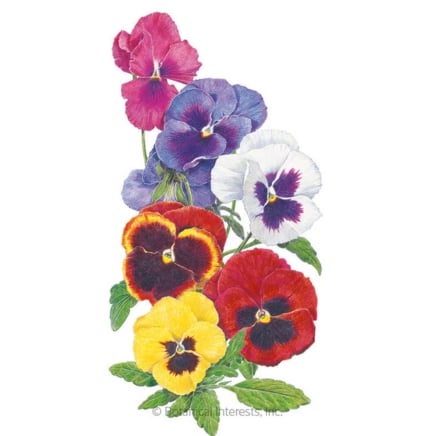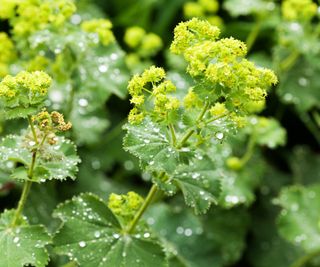April marks a turning point in the spring season, when temperatures warm and new leaves and buds emerge. As we approach final frost dates, the garden comes to life and April flowers are prime for planting.
In hot climates, many gardeners are ready to plant warm season annuals and perennials by mid-month. In colder regions, seasonal transitions take a bit longer. No matter where you live, there are tons of annuals and perennials that span the seasonal variations of spring.
For best success with April planting, it’s helpful to know your USDA hardiness zone and average last frost date. Early spring sees an influx of changing temperatures and rainfall (and late snow showers and snow melt, depending on your climate).
Opt for flowering plants that thrive in cool weather and variable conditions. Frost-tolerant selections withstand temperature and moisture fluctuations. Here, we’ll explore annuals and perennials that flourish in the cool temps of spring.
Pansies
Swiss Giants Blend Pansy Seeds
Lupine
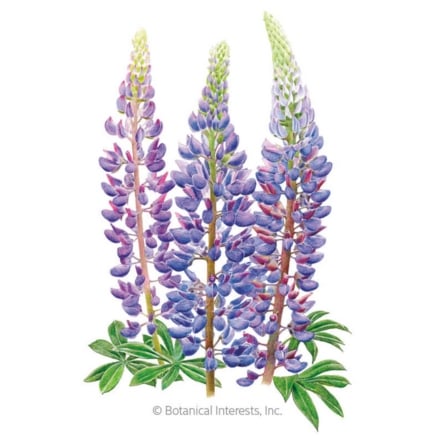
Sundial Lupine Bluebonnet Seeds
Calendula
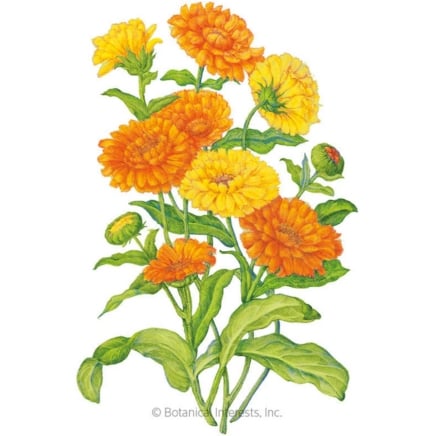
Pacific Beauty Blend Calendula Seeds
15 April Flowers To Plant In Early Spring
With so many plants to choose, you may be wondering which will perform best in cool springs. Thankfully, we’ve gathered together 15 April flowers that you can plant right now.
Columbine
 Welcome the post-winter beauty of columbine to your garden.
Welcome the post-winter beauty of columbine to your garden.
Columbine is a native cold-hardy perennial with graceful, origami-like blooms that bring delight after long winters. Columbine’s attractive compound leaves emerge quickly as temperatures warm. Before you know it, the flowers appear like lanterns floating atop tall spikes. Nodding flowers range from vibrant red and yellow to beautiful blues, purples, and pinks, depending on the variety. Hummingbirds and other pollinators appreciate the nectar from the tubular blooms, and birds feed on the seeds in fall.
With many winter-hardy April flower species available, opt for one especially suited to your climate. Eastern red columbine (Aquilegia canadensis) brings showy red and yellow bell flowers, perennializes well, and spreads by self-seeding. Aquilegia coerulea, the popular Rocky Mountain blue columbine, brings heirloom violet and white blooms with yellow stamens to the western garden.
With a natural habitat along woodland edges, clearings, and riverbanks, columbine grows best in moderately moist, well-drained soils (not too wet or dry). Protect it from hot afternoon sun in warm months. Columbine is semi-evergreen and retains its basal leaves unless temperatures are too cold or too hot, where it enters dormancy until temps level off.
Sow columbine seeds outdoors three to four weeks before your final frost. All they need is to be pressed onto the soil’s surface—there’s no need to cover them, and you’ll start seeing seedlings in about three weeks. If you started them indoors, transplant full, leafy plants as soon as your soil is workable in spring.
Sweet Alyssum
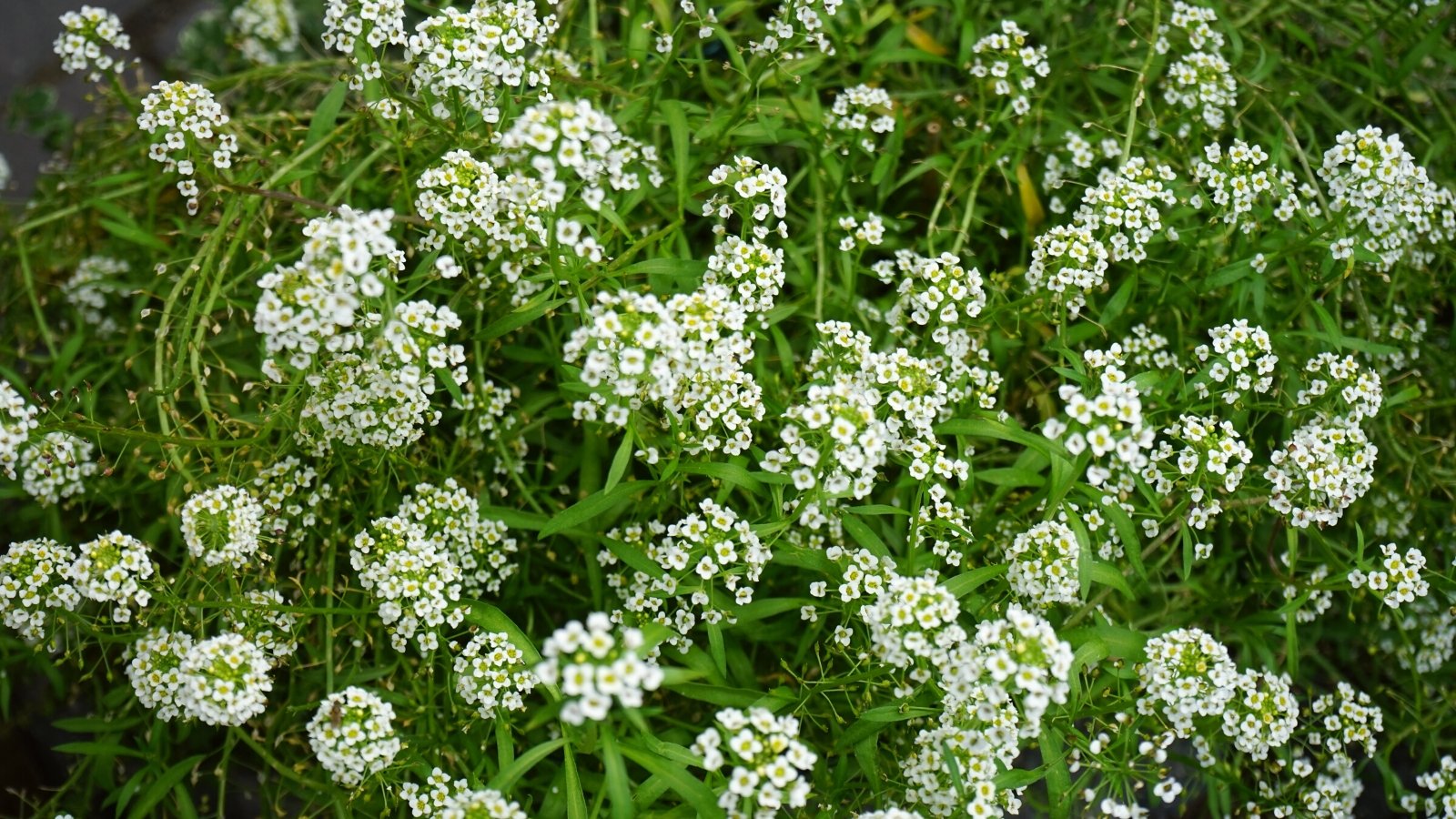 Add charming, fragrant sweet alyssum to your garden borders.
Add charming, fragrant sweet alyssum to your garden borders.
Sweet alyssum is a petite annual covered in white, pink, and purple pincushion blooms in spring and fall. Its sweet fragrance and numerous flowers attract beneficial insects, and the drifts of pastel colors in the garden make it a fantastic border or filler planting.
These pretty annuals are hardy down to 20℉ (-7°C). Sweet alyssum self-seeds in the garden. Over the fall and winter, leave existing plants in place and gently remove the older plants in the spring to reveal seedlings.
If sowing these seeds, press them gently onto the soil’s surface and don’t cover them as light aids in their germination. Keep them damp, and they’ll germinate in 5-15 days.
Sweet alyssum is an easy-care annual in full to partial sun with well-drained soils. In the heat of summer, plants may turn yellow and fade but can resume blooming with cooler temperatures.
Snapdragons
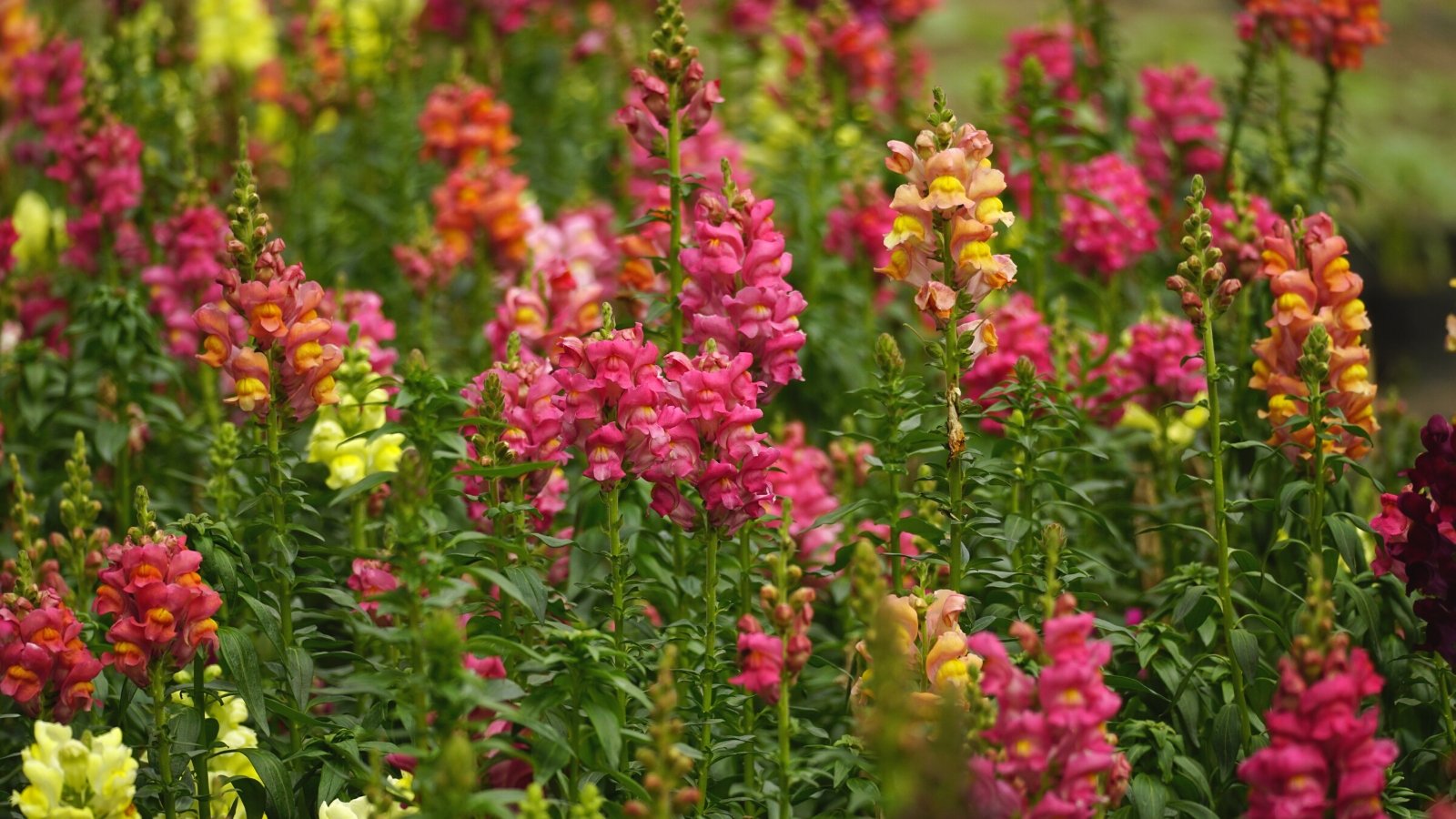 Plant snapdragons for vibrant, cold-season blooms in your garden.
Plant snapdragons for vibrant, cold-season blooms in your garden.
With their tall, upright bloom spikes, snapdragons bring an infusion of color to the cool-season annual display. At varying heights, they anchor the back of the border or fill the interior with a fountain of blooms.
Snapdragons are cold hardy to sub-freezing temperatures. In cold climates, snapdragons bloom in spring, summer, and fall. In mild climates, they’ll bloom from fall to spring, bringing winter color and interest.
Snapdragons are April flowers that thrive in the sun in moist, well-drained soils. Remove spent blooms to promote flowering (and enjoy them as a beautiful cut flower!). Snapdragons are edible, if a little bitter, and make a pretty garnish. Bitter can be good, as deer rarely feed on snaps.
Pansies and Violas
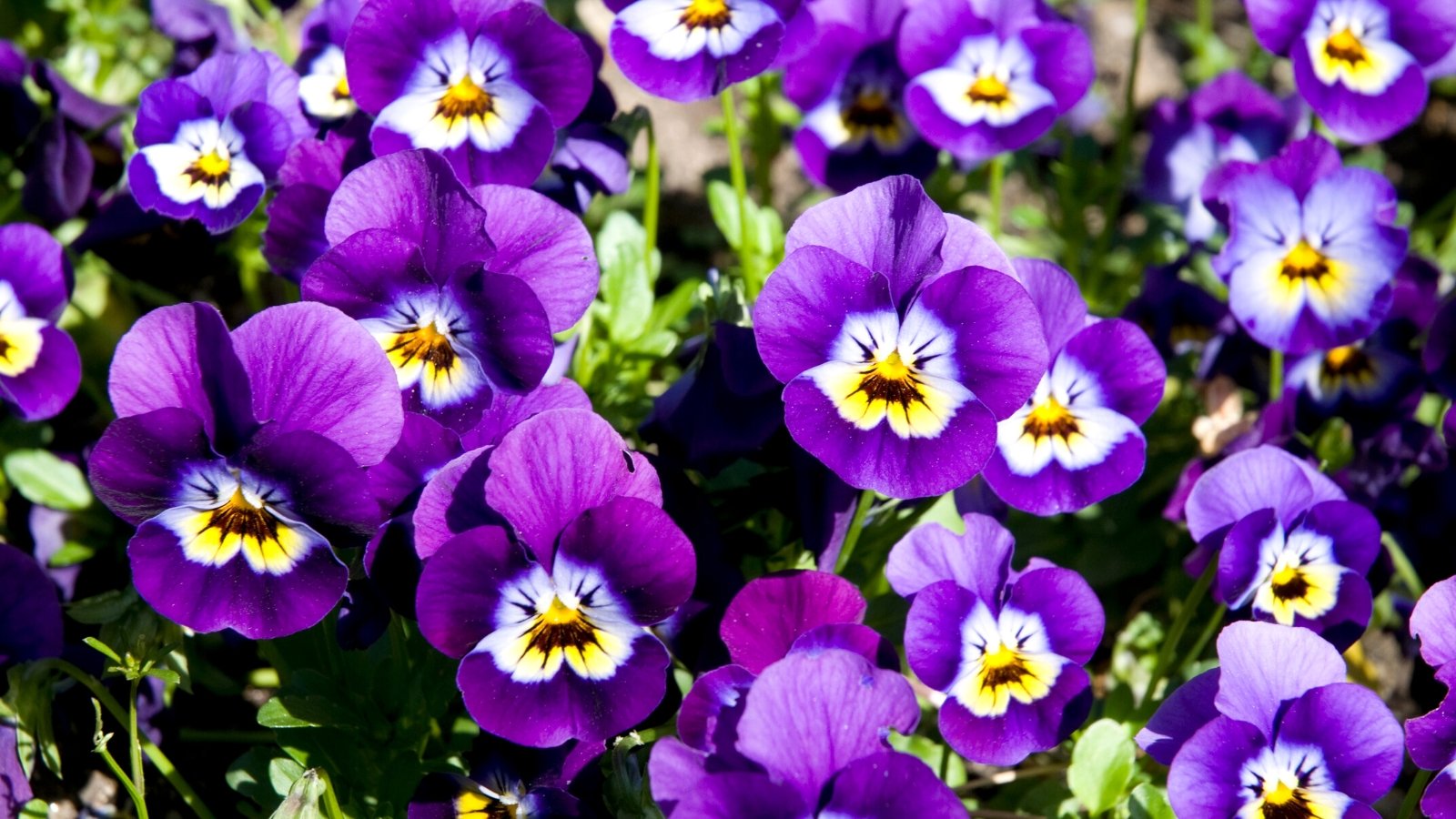 Enjoy a colorful winter garden with pansies and violas.
Enjoy a colorful winter garden with pansies and violas.
Violas and pansies (both in the Viola genus) boast a profusion of cool season blooms in almost endless shades and color combinations. Pansies bear bigger flowers on larger plants, while violas yield smaller blooms on compact forms. Trailing varieties carry delicate blooms on long stems to spill over a planter or bed edge.
Pansies and violas are favorite cool-season annual options. They survive winter in mild climates and withstand seasonal transitions in colder climates. These tough annuals tolerate cold spells with temperatures in the twenties (and sometimes lower, depending on conditions). Leaves may gray during cold snaps and recover as temperatures warm.
Pansies and violas are easy to grow in well-draining soils. Pansies, especially, benefit from deadheading spent blooms to promote flowering.
Lupine
 Experience the enchanting beauty of lupines in your garden.
Experience the enchanting beauty of lupines in your garden.
Lupine enchants the spring and summer landscape with lovely bell-shaped blooms in blues, purples, pinks, whites, yellows, and bicolors. These graceful perennial April flowers grow in various wild conditions – from dry to moist, hot to cold, and in less-than-ideal soils.
Depending on the species, lupine is native to eastern North America (wild lupine) and western North America (meadow lupine). These sweet pea flowers are rich in in tone and have attractive palmate leaves. Flowers are often two-toned in purple and blue or blue and white.
Lupine tolerates poor soils that lack nutrients. These wild beauties are legumes, meaning they fix nitrogen in the soil and improve the nutrition of the surrounding soil.
Sow lupine seeds by scattering them outdoors in fall or winter or up to four to six weeks before your final frost date. Nursery-grown plants can be transplanted into the garden when the soil is workable in spring.
Feverfew
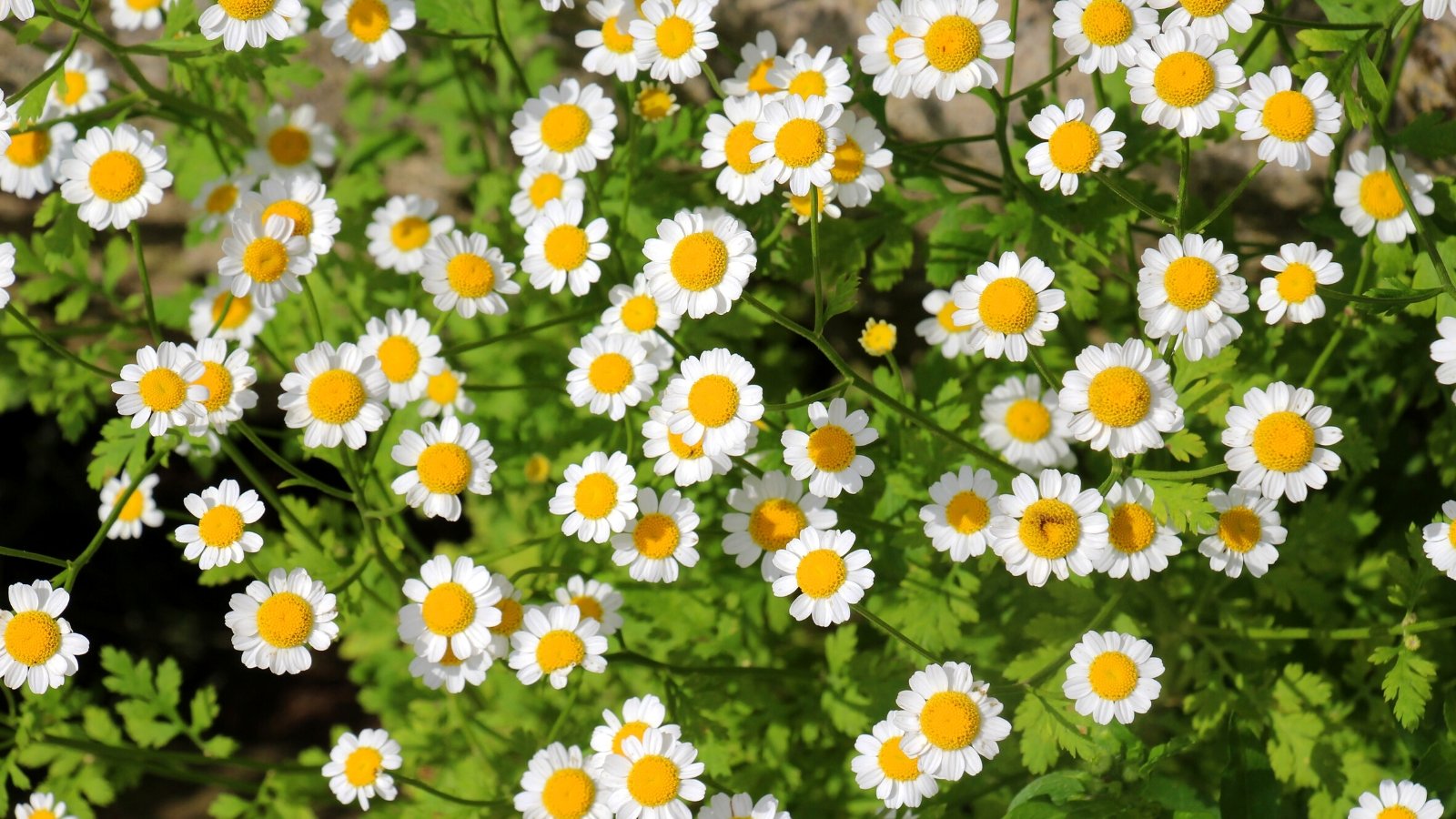 Embrace the timeless charm of feverfew in your garden.
Embrace the timeless charm of feverfew in your garden.
Feverfew is an old-fashioned garden favorite. Its bushels of petite daisy-like flowers bloom from early summer through frost. The feathery and aromatic foliage has longstanding herbal uses.
Sow feverfew seeds in late winter and early spring, a few weeks before the last frost date. Scatter seeds and lightly press them down to ensure good contact with the soil and exposure to sunlight. Sun-loving feverfew is easy to grow in moist, well-drained soils.
Feverfew self-seeds hardily, so pull any unwanted volunteers and deadhead spent blooms to prevent unwanted seeding. Deadheading also proliferates flowering. Use feverfew in naturalized areas where it can reseed freely or in borders and rock gardens.
Foxglove
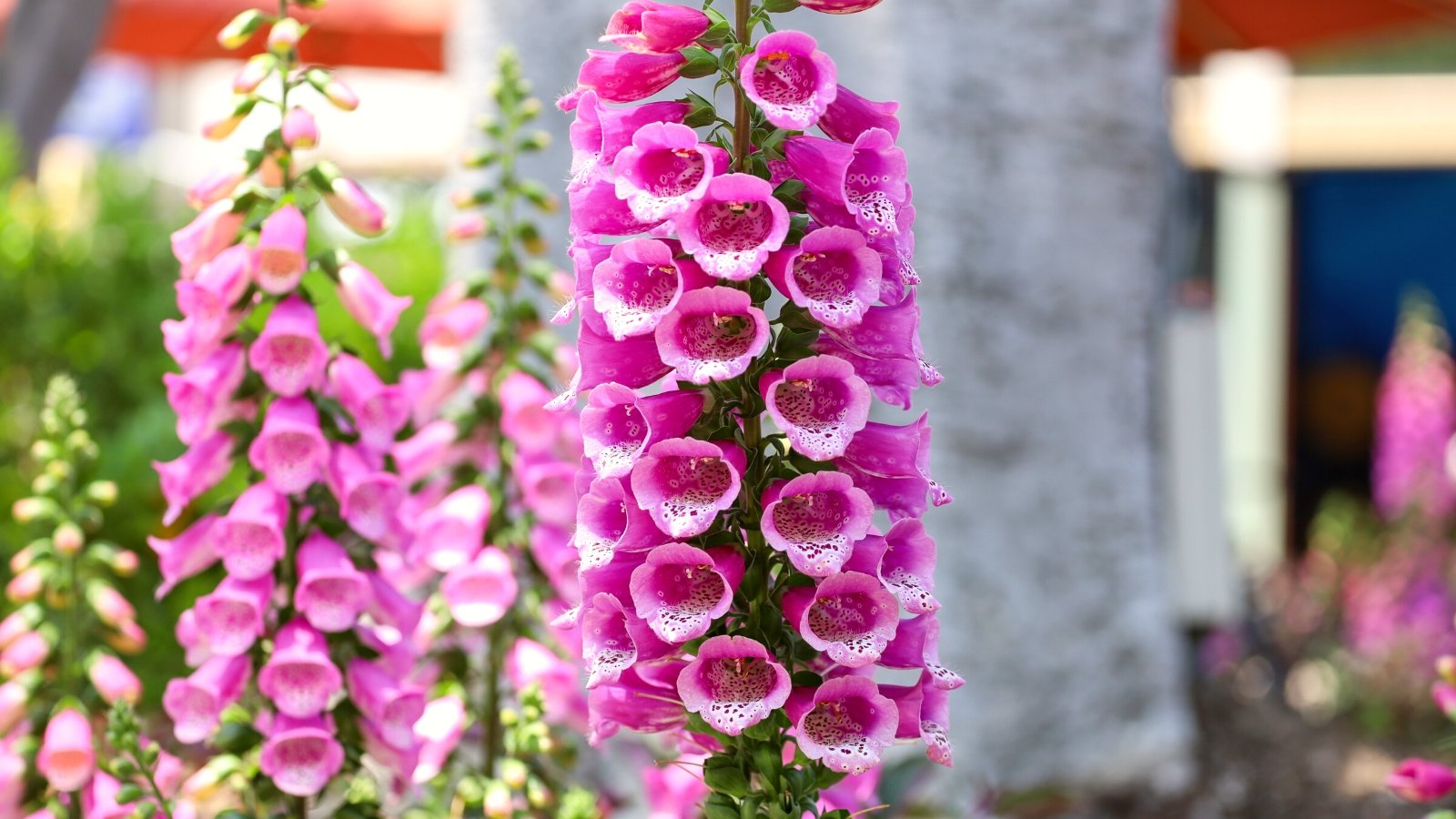 Invite the buzzing beauty of foxgloves into your garden.
Invite the buzzing beauty of foxgloves into your garden.
A mass of foxgloves is among the most striking spring bloom displays. Foxgloves bear stunning bell flowers on tall, sturdy stems in colors ranging from rose to creamy white to peach, often with freckled throats. Busy bees can’t resist stopping at each flower along the loaded stalks.
Foxgloves are cold-hardy biennials that bloom in spring and summer in cool climates. They’ll establish over the winter in warm climates for a late spring bloom show.
Digitalis seeds prefer surface-sowing without burying one to weeks after the final frost (or in early fall in mild climates). Lightly rake the area before nestling in your seeds so they don’t drift or wash. Indoor-started plants can be transplanted into the garden when soils thaw. Foxgloves grow best in full to partial sun in consistently moist, organically rich soils with good drainage.
Calendula
 Welcome vibrant, resilient calendula to your garden’s color palette.
Welcome vibrant, resilient calendula to your garden’s color palette.
Calendula is long-blooming with bright ray flowers from spring to frost in cool climates. The multi-layered flowers are daisy-like in rich yellow, orange, pink, white, and bicolor varieties.
Calendula is a frost-tolerant annual. In hotter climates, calendula grows best in the cool temperatures of fall and spring and even over the winter for seasonal color. In colder climates, sow calendula seeds outdoors two to four weeks before the final frost.
Calendula is easy to grow in full sun and well-drained soils. It withers in high summer heat. In cool climates, it recovers for a fall bloom. Calendula leaves and flowers are edible (blooms make a lovely garnish) and dry beautifully for arrangements, teas, and baking. Plants are deer-resistant.
Primrose
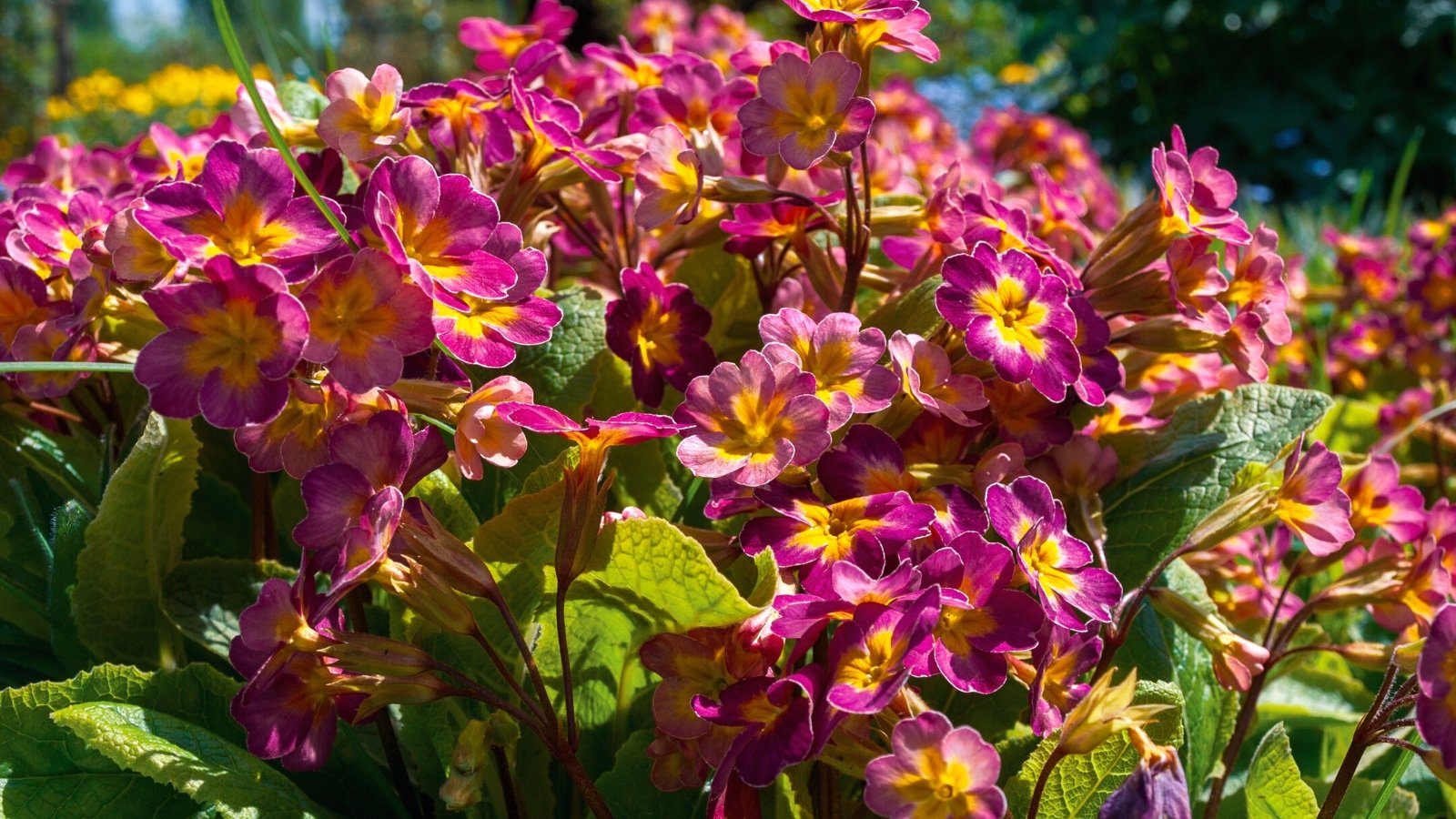 Embrace the early charm of primroses in your garden.
Embrace the early charm of primroses in your garden.
With over 400 primrose species, these sweet perennials (or annuals in warm climates) are among the first to bloom in late winter and early spring. Primroses span the color spectrum and feature clusters of tiny flowers that rise above rosettes of dark, ruffled leaves.
Bold shades of blue, green, orange, red, and pink make primrose an early standout in the garden. With a sweet, subtle fragrance and low-growing habit, primrose makes excellent border plantings in garden beds, along walkways, and in container arrangements.
Primrose bloom times range from February to May, some lasting into the summer, depending on the climate. They prefer cool temperatures, resist frost, and withstand the variable seasonal spring conditions.
Depending on the variety, primroses prefer organically rich, moist, well-drained soils. Once established, primroses need little care except dividing if groups become crowded.
Lily of the Valley
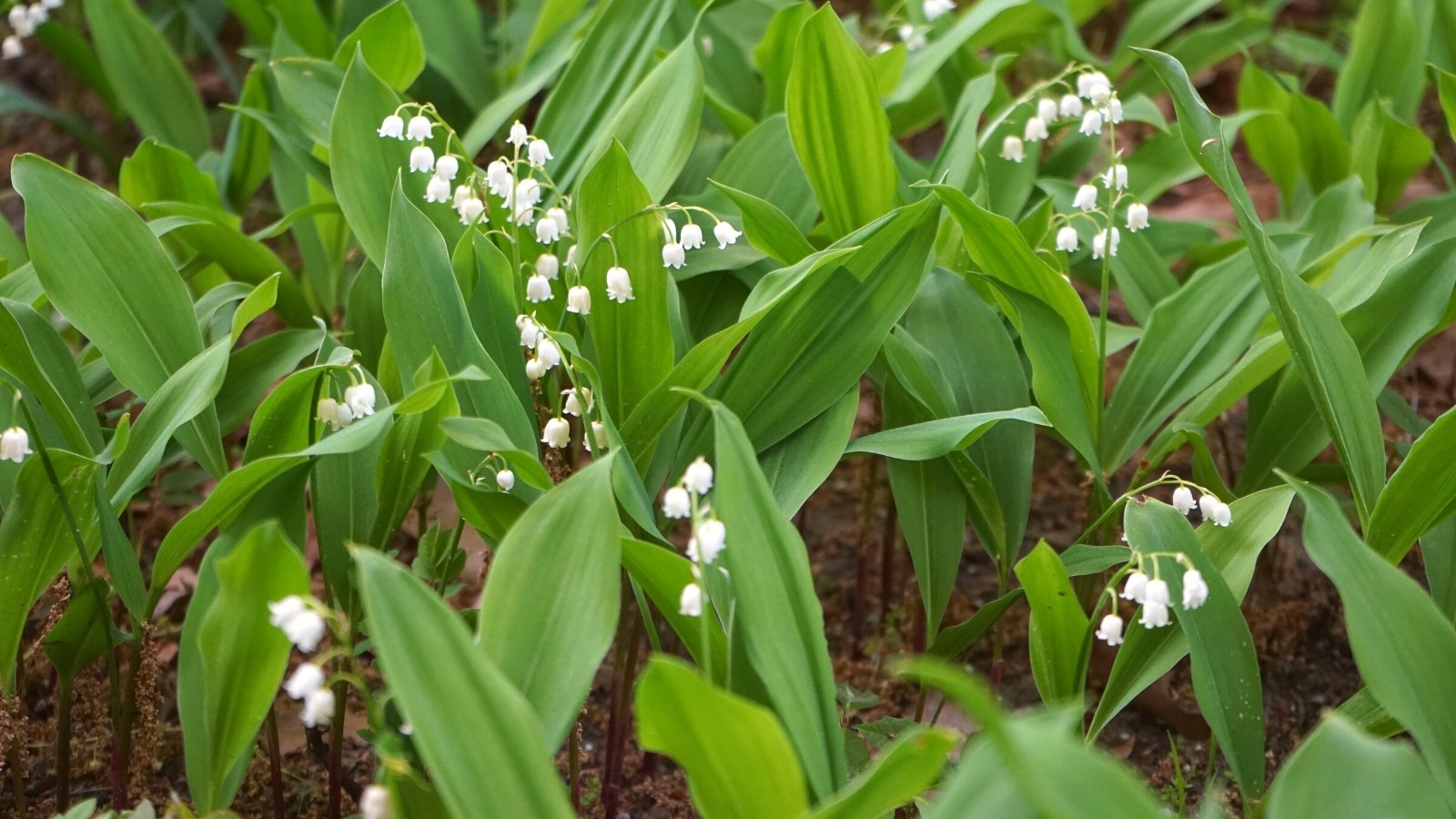 Add elegance to your shade garden with lily of the valley.
Add elegance to your shade garden with lily of the valley.
Lily of the valley brightens the shade garden with white bell-shaped blooms in spring and summer. Plants reach only 12 inches tall but are lush with broad green leaves. Delicate, nodding flowers are fragrant and emerge in pendulous clusters amongst the leaves.
Lily of the valley is lovely in the woodland border or under shrubs, thriving in dappled sun and shade. Use it as a ground cover for impact in mass plantings. The plant spreads slowly by rhizomes, though they eventually overtake the roots of other plants if not divided. In that same vein, it’s classed as invasive in certain areas. Check with your local extension office before planting.
Lily of the valley grows best in cool climates and even withstands sub-zero temperatures. They’ll thrive in zones without high heat and humidity. All parts of the plants are toxic, so make sure to grow them out of the range of curious children and animals.
African Daisy
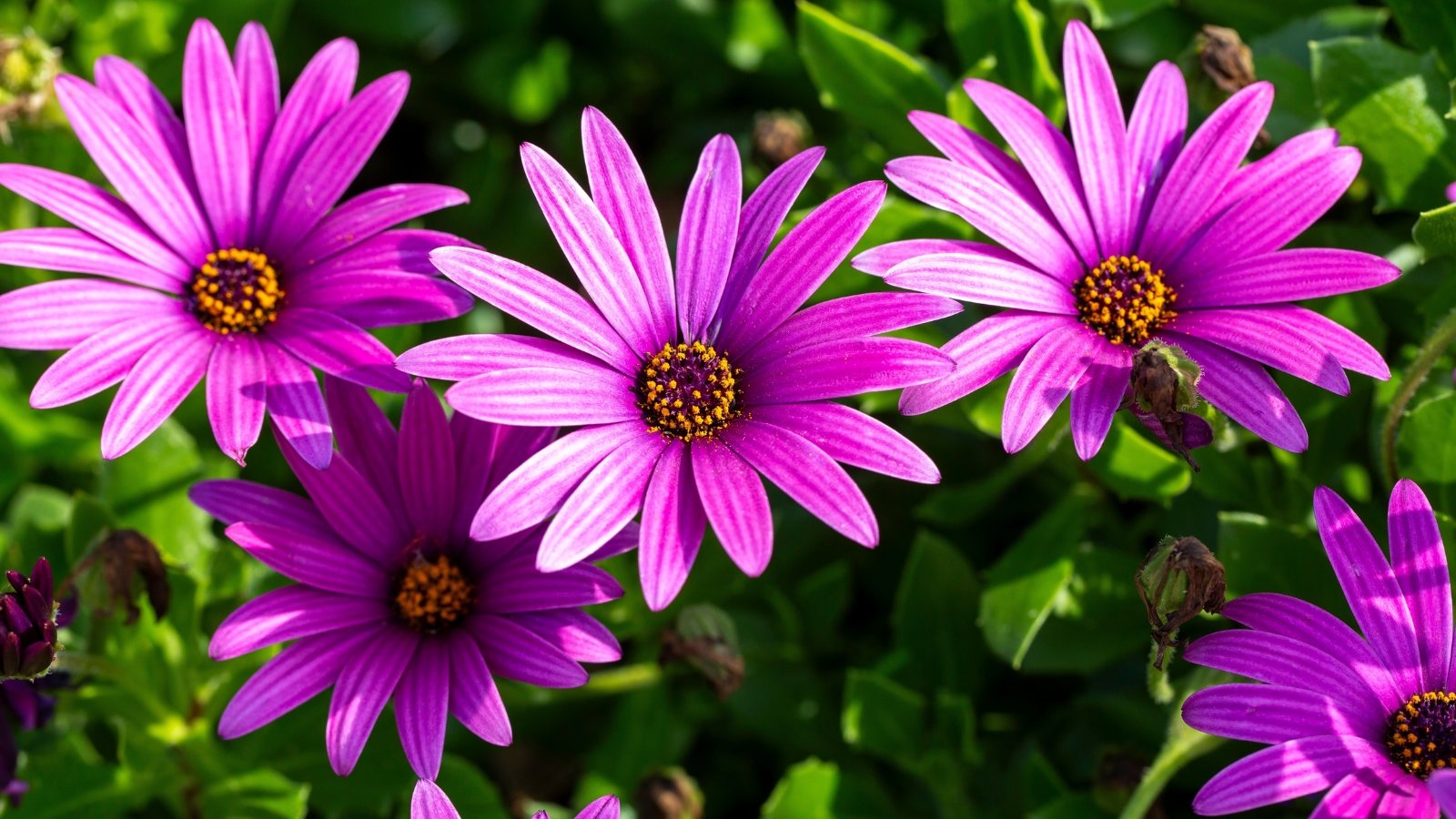 Illuminate your spring garden with Osteospermum’s vibrant daisy-like blooms.
Illuminate your spring garden with Osteospermum’s vibrant daisy-like blooms.
Osteospermum, also called African daisy, welcomes the cool weather of spring with a profusion of daisy-like flowers. The colorful ray petals glow in shades of white, pink, purple, coral, and yellow. Some even have little “spoons” on each petal’s end, like‘Whirligig,’ sure to spark whimsy with its scalloped, spoon-shaped petals in white and deep purple.
In climates with cool summers, osteospermums flower from spring until frost. In warmer climates, they’ll do best in spring before higher temperatures arrive. Osteospermum is cold hardy to 25℉ (-4°C) but is best planted after the final frost.
African daisies make a beautiful cut flower. They prefer full sun in moist, well-drained soils. Native to South Africa, these Mediterranean climate plants tolerate periods of drought.
Sweet Peas
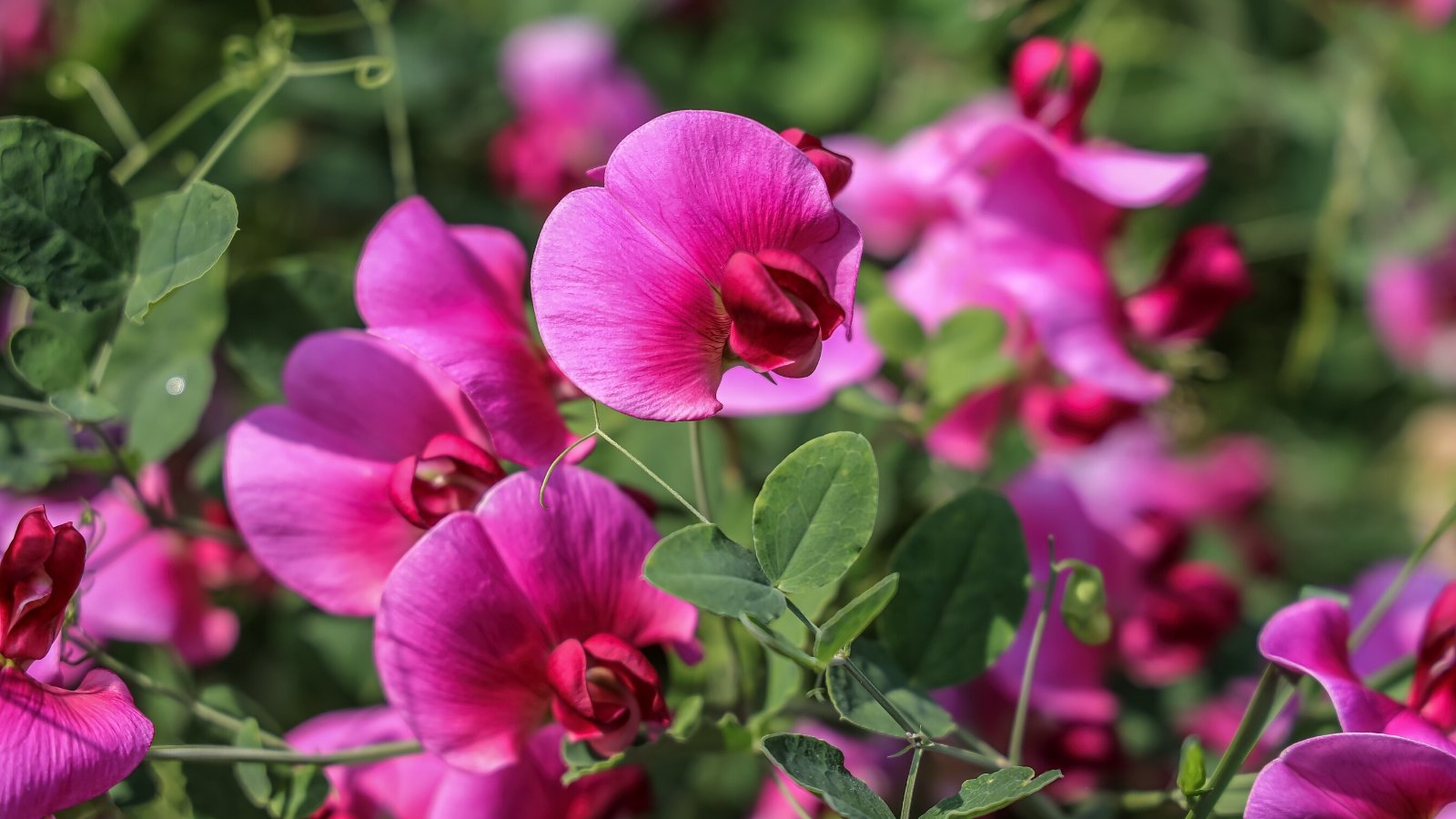 Enhance your garden with fragrant, colorful ornamental sweet peas.
Enhance your garden with fragrant, colorful ornamental sweet peas.
Ornamental sweet peas charm the garden with colorful blooms on twining vines and a heavenly fragrance. In a vairety of colors like pink, mauve, red, blue, maroon, peach, and white, sweet peas bring vertical interest to the garden display, container, and floral arrangement.
These frost-tolerant beauties flower in spring and summer before hot temperatures set in. Sweet peas grow quickly from seed and can be directly sown in the garden four to six weeks before the anticipated last frost date. Transplant potted plants and seedlings into the garden a few weeks before the final frost.
Sweet peas require full sun, regular water, and well-draining soils. Their tendril will cling and climb to a support structure. Tying the stems helps direct and control growth.
Stock
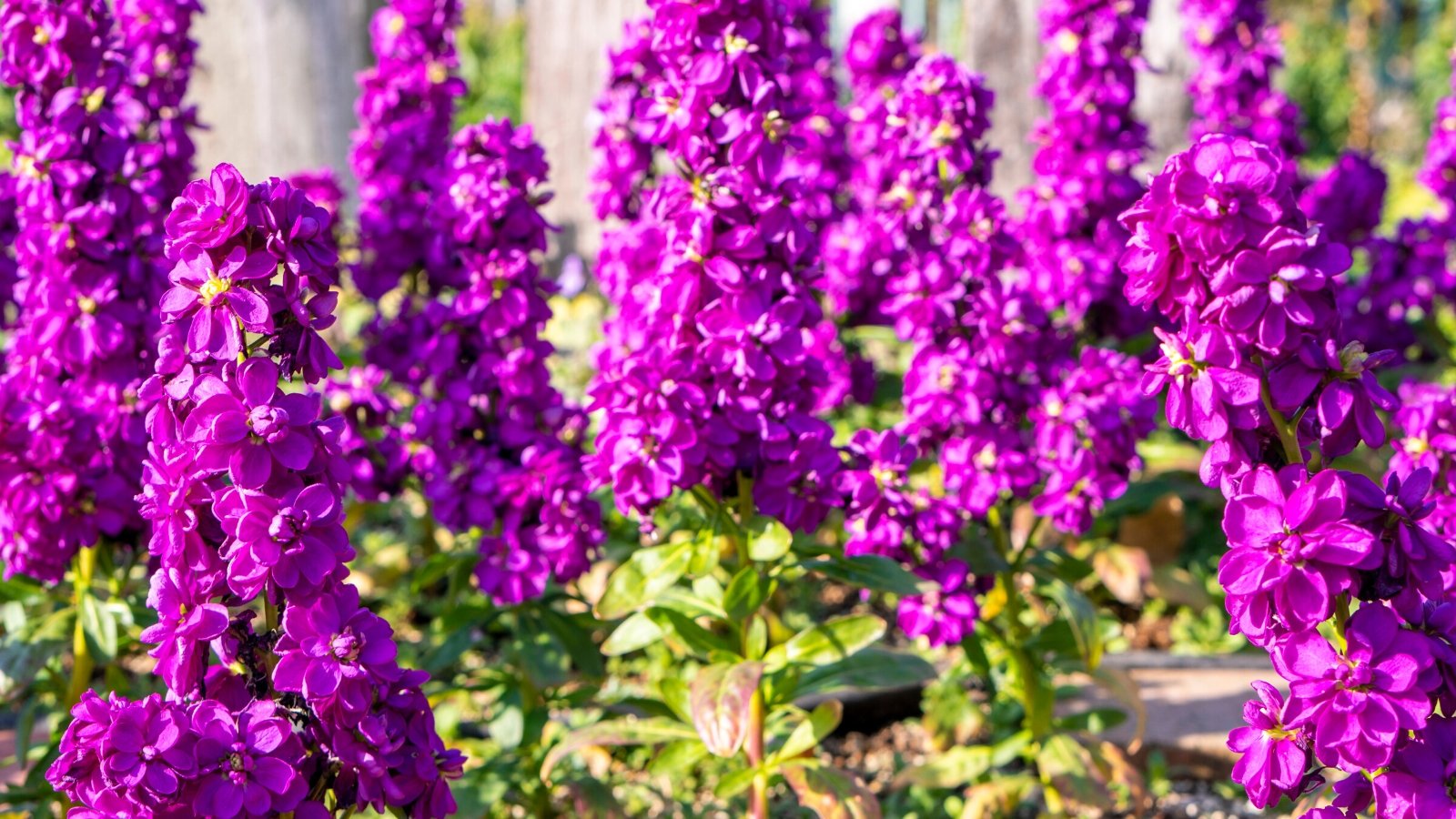 Brighten your garden with fragrant, jewel-toned stock flowers.
Brighten your garden with fragrant, jewel-toned stock flowers.
Stock is an old-fashioned garden plant with fragrant, jewel-tone flowers on stiff, upright stems. A cool-season bloomer, stock features single or double flowers in white, red, purple, cream, and copper, among other hues. They make a lovely cut flower with a scent to savor.
Stock thrives and blooms best in cool temperatures. It doesn’t withstand hot summers. Stock blooms from spring through frost as a tender perennial in cool climates and as a cool-season annual in warmer zones. Stock is hardy to 25℉ (-4°C).
This plant germinates in seven to ten days. To prolong blooms, sow successional plantings. Direct sow seeds one to two weeks after your last frost date. Leafy plants tolerate periods of light frost. Stock does best in highly organic and well-draining soils, though it withstands occasional wet soils.
Bells of Ireland
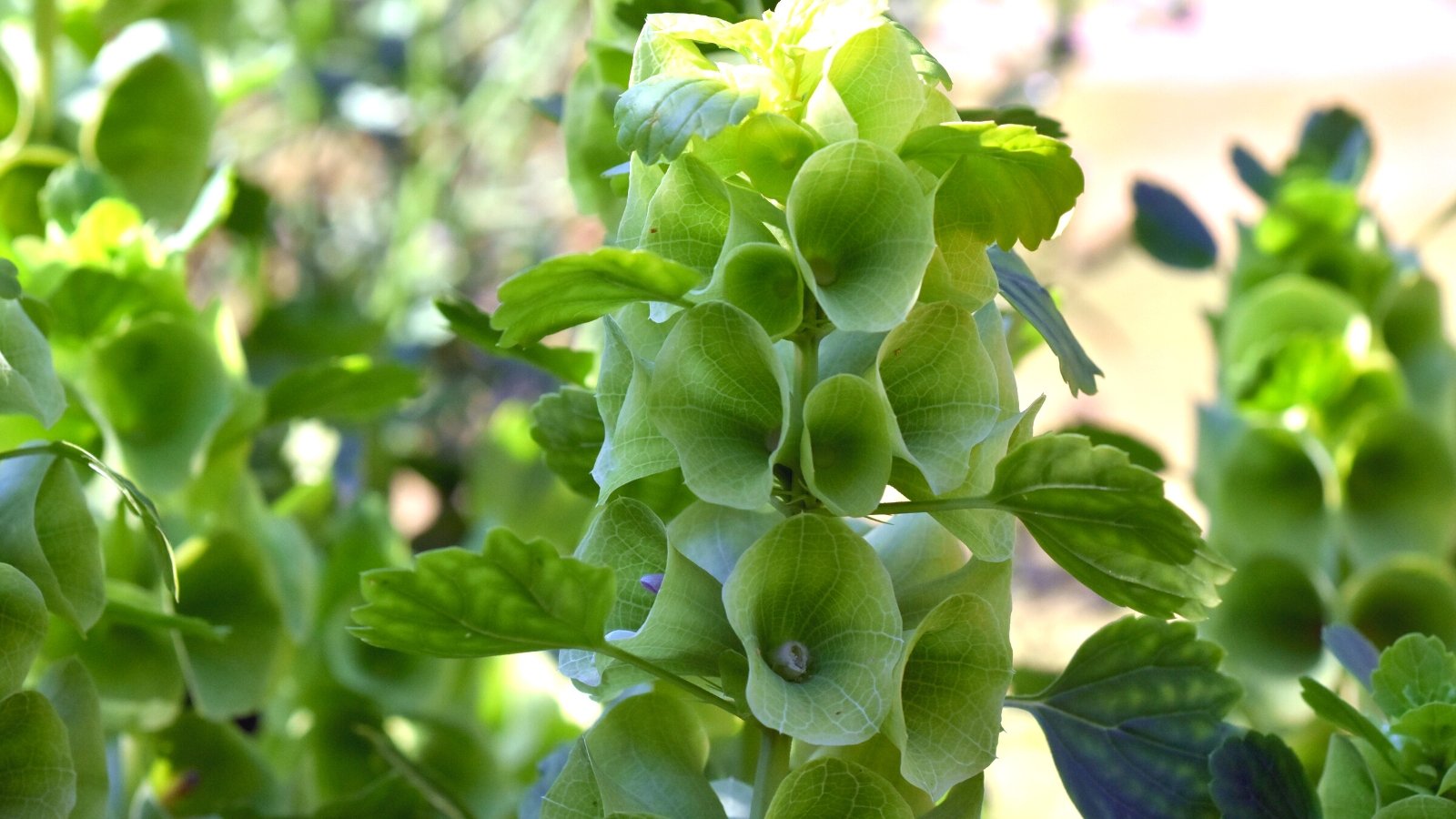 Elevate your garden with Bells of Ireland’s striking blooms.
Elevate your garden with Bells of Ireland’s striking blooms.
Bells of Ireland feature tall bloom spikes loaded with bells in shades from pale green to candy apple. These unusual annual blooms make rich additions to fresh and dried flower arrangements. Their tall blooms serve the back of the garden border and contrast beautifully with dark-leaved foliage and bold flowers.
A garden heirloom, Bells of Ireland grow easily from seed. Sow seeds outside one to two weeks before the average final frost date.
Leave spent bloom spikes to dry and scatter naturally for plants to reseed in successional seasons. Bells of Ireland prefer full sun and regular water throughout the growing season. They don’t thrive in hot and humid summers.
Plains Coreopsis
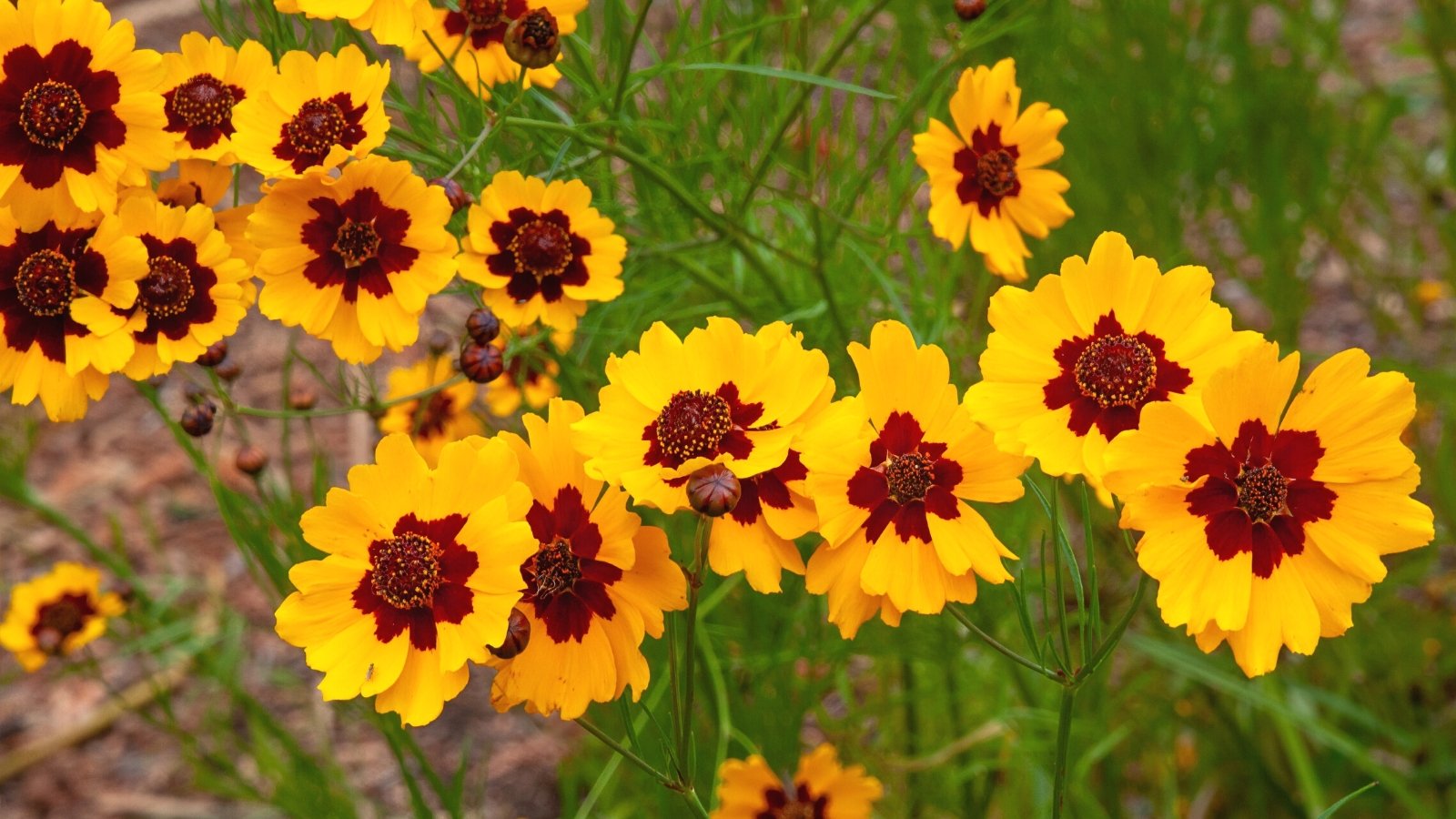 Illuminate your garden with Coreopsis’ vibrant, long-lasting blooms.
Illuminate your garden with Coreopsis’ vibrant, long-lasting blooms.
Coreopsis brings masses of sunny blooms to the garden. It’s often one of the first flowers to spring up and the last to fade. In mid-summer, waves of yellow brighten the landscape.
Plains coreopsis is native to the western U.S. and widely cultivated due to its adaptability. It features a variation in color, with showy yellow daisy-like petals with deep red highlights and brown button centers. Though considered an annual, a single plant may flower for two to three years.
Coreopsis is an early-sow option. Direct sow seeds one to two weeks before your final frost. Coreopsis reseeds readily for successional seasons of color.
Final Thoughts
April brings excitement in the garden as old favorite April flowers emerge and newcomers take hold. It’s the perfect time to sow and plant cool-weather-loving selections for a beautiful flowering display.
Cool-season plants bloom away through spring and into early summer, some lasting until fall (we won’t think about fall frosts just yet). Enjoy your flourishing garden this season as it bursts to life in the cool conditions of spring.


